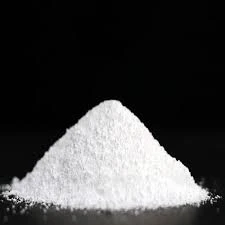Chemicals Used to Disinfect Water Supply
Water is essential for life. Ensuring that our water supply is safe for consumption is a critical task that involves various methods of disinfection. Disinfection is the process of eliminating or reducing harmful microorganisms from water to prevent waterborne diseases. To achieve this, several chemicals are commonly used in the water treatment process.
One of the most widely used disinfectants in water treatment is chlorine. Chlorination has been a standard practice since the early 20th century and continues to be effective against a broad spectrum of pathogens, including bacteria, viruses, and some protozoa. When chlorine is added to water, it reacts to form hypochlorous acid, which is a powerful disinfectant. The advantages of using chlorine include its effectiveness, relatively low cost, and residual properties, meaning it continues to disinfect as it travels through the distribution system. However, chlorine can react with organic matter in water to form disinfection byproducts (DBPs), some of which are harmful to human health, necessitating careful monitoring and management.
Another common chemical used for disinfection is chloramine, which is formed by combining chlorine with ammonia. Chloramine is preferred in some water treatment facilities because it produces fewer DBPs compared to chlorine, and it offers a more stable residual in the water supply. This enhanced stability makes chloramine particularly useful for long-distance water transport, as it continues to provide disinfection along the distribution network. However, it is generally less effective against certain pathogens, particularly some protozoans, which may require additional disinfection steps.
what chemicals are used to disinfect the water supply

Ozone is another powerful disinfectant used in water treatment. It is generated on-site by passing oxygen through an electric discharge, creating a highly reactive form of oxygen. Ozone is effective at destroying a wide range of microorganisms and does not produce harmful residuals like chlorine or chloramine. However, its short half-life means that it must be generated on-site and used immediately, which can pose logistical challenges. Additionally, while ozone is effective against many pathogens, it requires careful management and monitoring due to its potency, which can lead to the formation of harmful byproducts if not properly controlled.
Ultraviolet (UV) light is a non-chemical method of disinfection that is gaining popularity in recent years. UV treatment involves exposing water to UV light, which inactivates microorganisms by disrupting their DNA. This method is effective against bacteria, viruses, and protozoa. One of the key advantages of UV disinfection is that it does not introduce any chemicals into the water, eliminating concerns regarding chemical residuals. However, UV treatment systems require electricity and can be influenced by water quality, such as turbidity and the presence of particulates, which can shield microorganisms from UV exposure.
Hydrogen peroxide is another oxidizing agent occasionally used for disinfection. It is effective against a wide range of pathogens and can break down into harmless water and oxygen, making it an environmentally friendly option. Hydrogen peroxide is often used in combination with other disinfection methods, such as UV light or ozone, to enhance overall disinfection efficacy.
In conclusion, the chemicals used to disinfect water supplies play a crucial role in ensuring public health and safety. While chlorine remains the most common disinfectant, alternatives such as chloramine, ozone, UV light, and hydrogen peroxide offer various benefits and challenges. The choice of disinfectant often depends on specific treatment goals, regulations, and local water quality conditions. As water treatment technology advances, the emphasis on effective, safe, and environmentally friendly disinfection methods will continue to grow, helping to ensure that we have safe drinking water today and for future generations.

